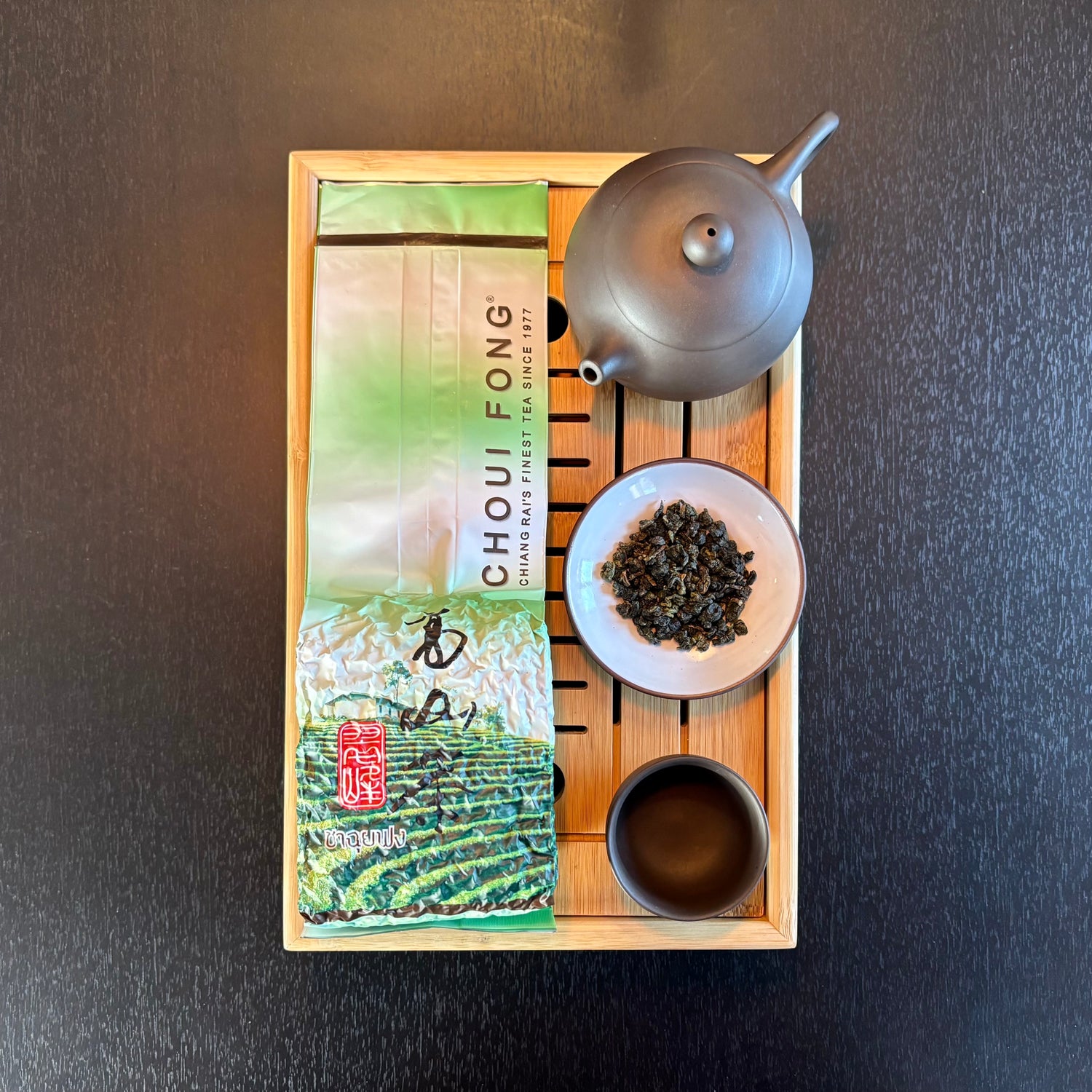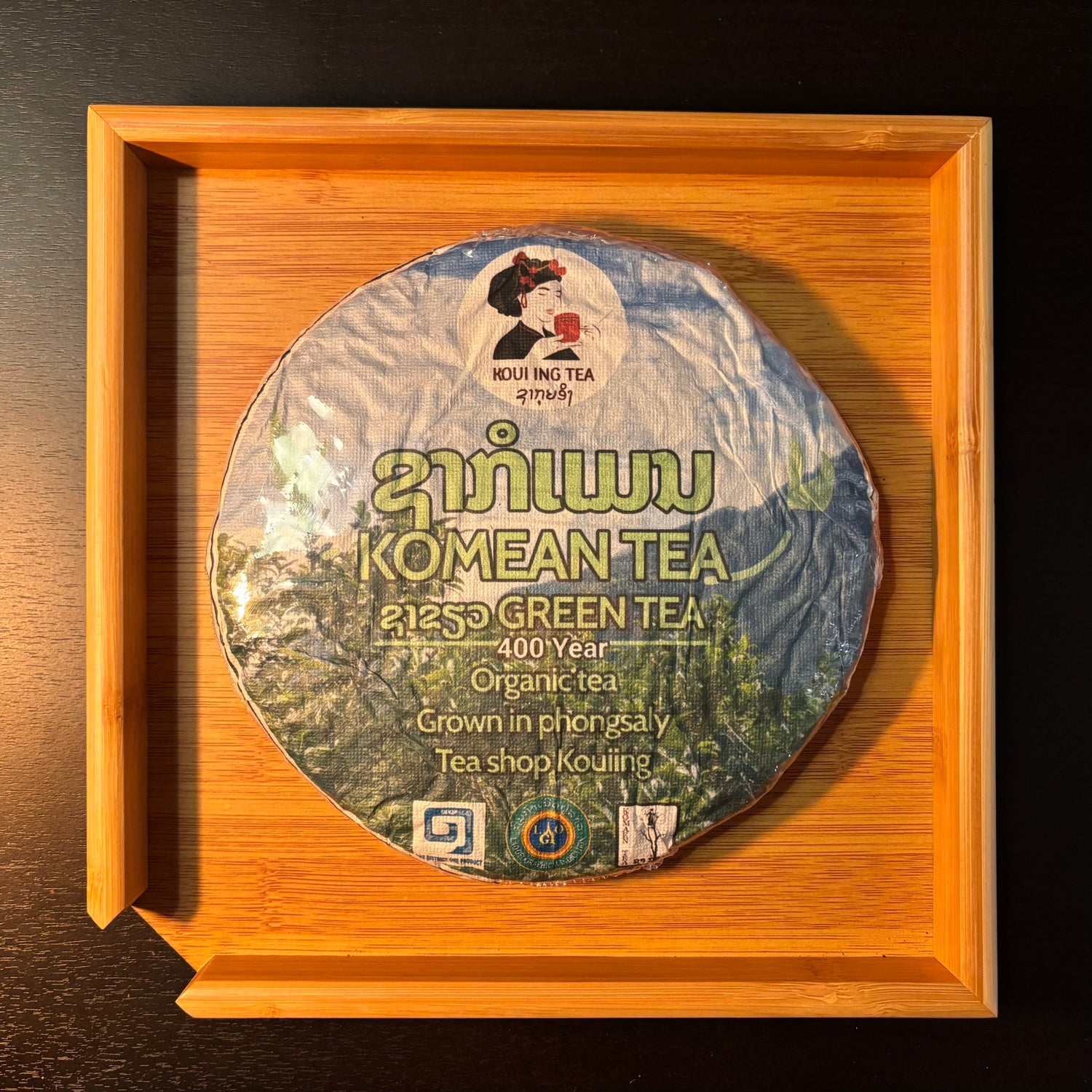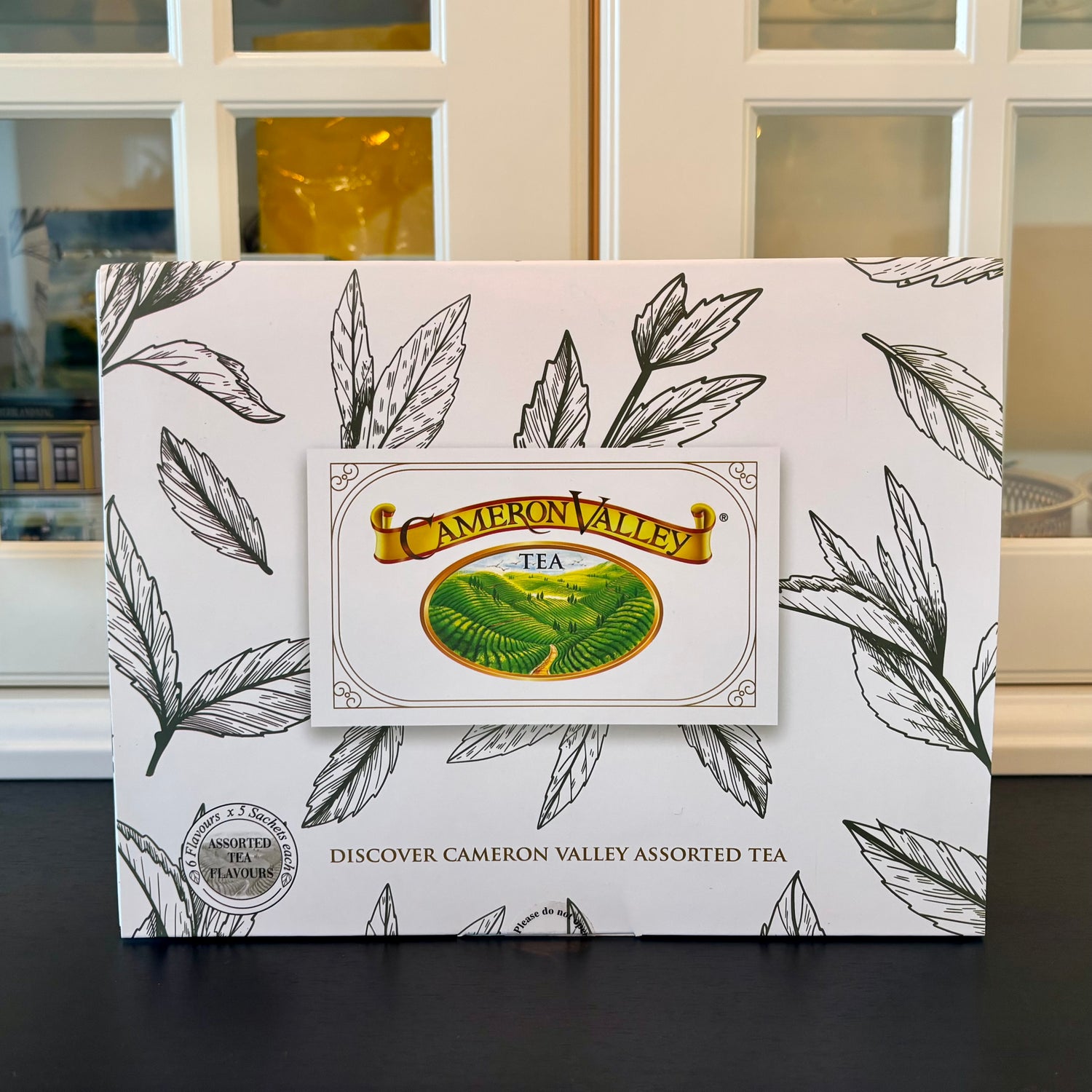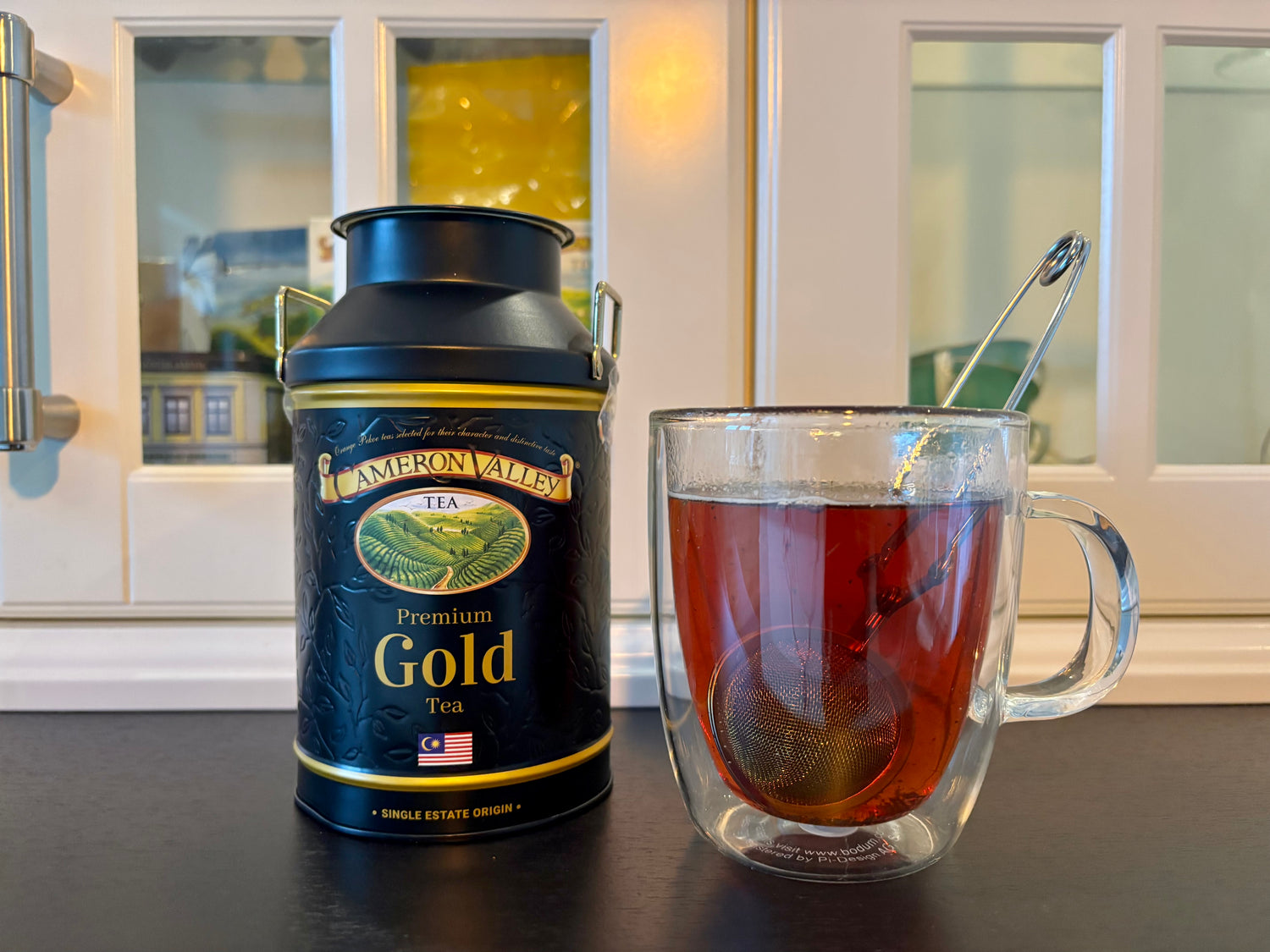Subscribe and save 10%!
5 products
5 products
Sort by:


Ruan Zhi Oolong Tea (Oolong No. 17) | Exclusively delicate tea from the mountains of northern Thailand
Ruan Zhi Oolong Tea (Oolong No. 17) | Exclusively delicate tea from the mountains of northern Thailand


400 Year Old Organic Tea | Green Pu'erh Tea from the Phu Noi people's 400-year-old tea plantation
400 Year Old Organic Tea | Green Pu'erh Tea from the Phu Noi people's 400-year-old tea plantation

Seohopene Ancient | Green Pu'erh Tea from the Yao people's 20m wild tea tree
Seohopene Ancient | Green Pu'erh Tea from the Yao people's 20m wild tea tree

Cameron Valley Gift Box / Sample 6 different flavors: Strawberry, Lychee, Orange etc.
Cameron Valley Gift Box / Sample 6 different flavors: Strawberry, Lychee, Orange etc.

Cameron Valley Premium Gold | Highest quality black tea from Cameron Highlands
Cameron Valley Premium Gold | Highest quality black tea from Cameron Highlands
Vill du odla ditt eget te?
Här hittar ni de olika sorters härdiga tebuskar vi har - för frilandsodling av ditt eget te. Plantorna och fröerna vi säljer använder vi själva till våra egna teodlingar i Marieholm och intill Kävlingeån, zon 1 i blåsiga Skåne.

Tebuske 'Tieguanyin': Härdig sort (Camellia sinensis var. sinensis) 40-50 cm
645 SEK
Unit price perTebuske 'Tieguanyin': Härdig sort (Camellia sinensis var. sinensis) 40-50 cm
645 SEK
Unit price per
Tebuske 'Longjing 43': Härdig sort (Camellia sinensis var. sinensis) 40-50 cm
595 SEK
Unit price perTebuske 'Longjing 43': Härdig sort (Camellia sinensis var. sinensis) 40-50 cm
595 SEK
Unit price per
Tebuske 'Kymin': Härdig sort (Camellia sinensis var. sinensis) 30-40 cm
375 SEK
Unit price perTebuske 'Kymin': Härdig sort (Camellia sinensis var. sinensis) 30-40 cm
375 SEK
Unit price per
Tebuske 'Kolkhida': Härdig sort (Camellia sinensis var. sinensis) 30-40 cm
375 SEK
Unit price perTebuske 'Kolkhida': Härdig sort (Camellia sinensis var. sinensis) 30-40 cm
375 SEK
Unit price perAndra avdelningar
Seeds from unusual and ancient cultivated plants are found here. Many of the plants have long been used by man for their useful properties - it may be about edibles as well as medicinal and household properties.
All seed varieties in the store contribute to a functional addition to the cultivation. Our seeds consist of open-pollinated and hand-pollinated heirloom varieties, we believe that a genetic diversity in the garden contributes to a healthier ecosystem that extends beyond the borders of our cultivations.
Plants are divided based on their different functions and characteristics - e.g. "Fruits & Berries" and "Medicinal plants" - via the filtering function on the right (below on mobile).
Plant history and cultivation description are available for all seeds.
NOTE. More unusual varieties are on the way!
Here you will find both super beautiful shoe models that are created specifically for gardening time and also other models that are well suited for different occasions in the garden. After our own search for good gardening shoes, we found the brand Rouchette, where we especially came to love their ankle boots insulated with neoprene. for the warmth and comfort they provide.
They have also designed a practical sole where no soil gets stuck and is taken into the home - the Frotte&Go system, exclusively developed and used by Rouchette. Rouchette is a family business from France for which we have become a dealer for good reason.
Without exaggeration, these are the most comfortable and practical boots we have ever had. That's where the idea came from to share their usefulness with other growers. The ankle boots are also great for the stable.
You can use the filter function below on the left to easily find the shoes you are looking for.
Here you will find books related to sustainable farming, food forest gardening, agroecology and other interesting knowledge about plants and their useful properties.
Take a look at PFAF's (Plants For A Future) book series - we have recently included all of their books in our range as we consider them to be a valuable source of useful plants for temperate gardens/cultivations.

Holy Basil / Tulsi (Ocimum tenuiflorum)
35 SEK
Unit price per
Indian Ginseng / Ashwagandha (Withania somnifera)
35 SEK
Unit price per
Toothache Plant / Szechuan Buttons (Acmella oleracea)
35 SEK
Unit price per
Culantro / Ngò Gai (Eryngium foetidum)
35 SEK
Unit price per













